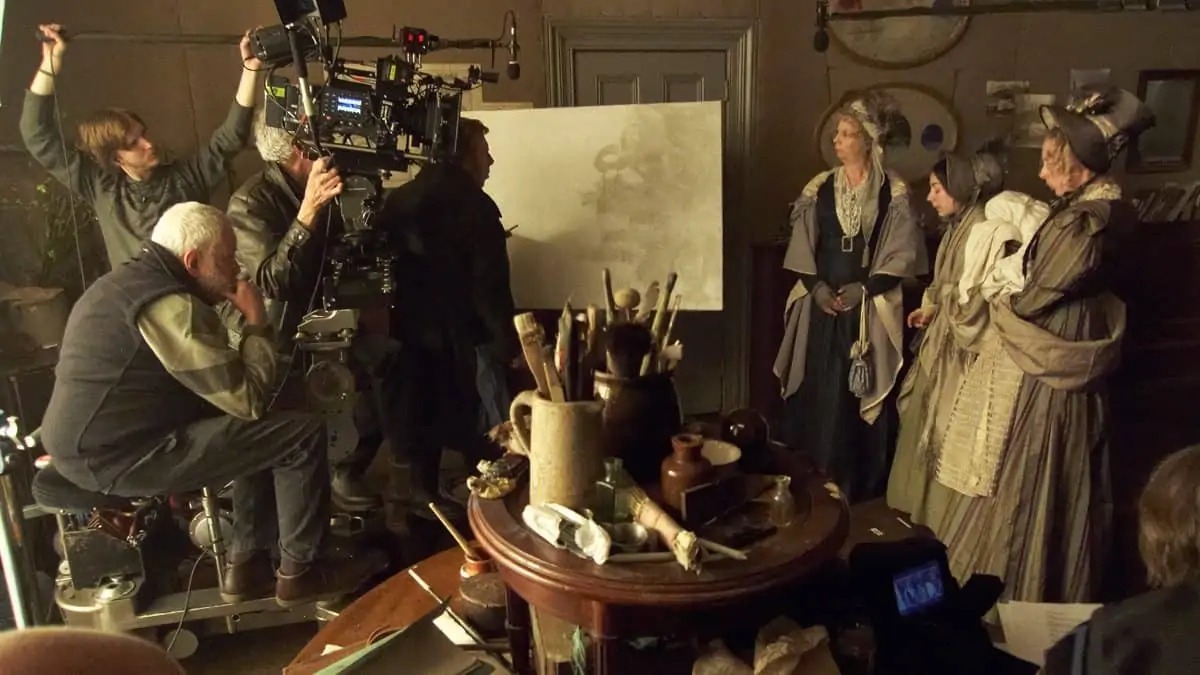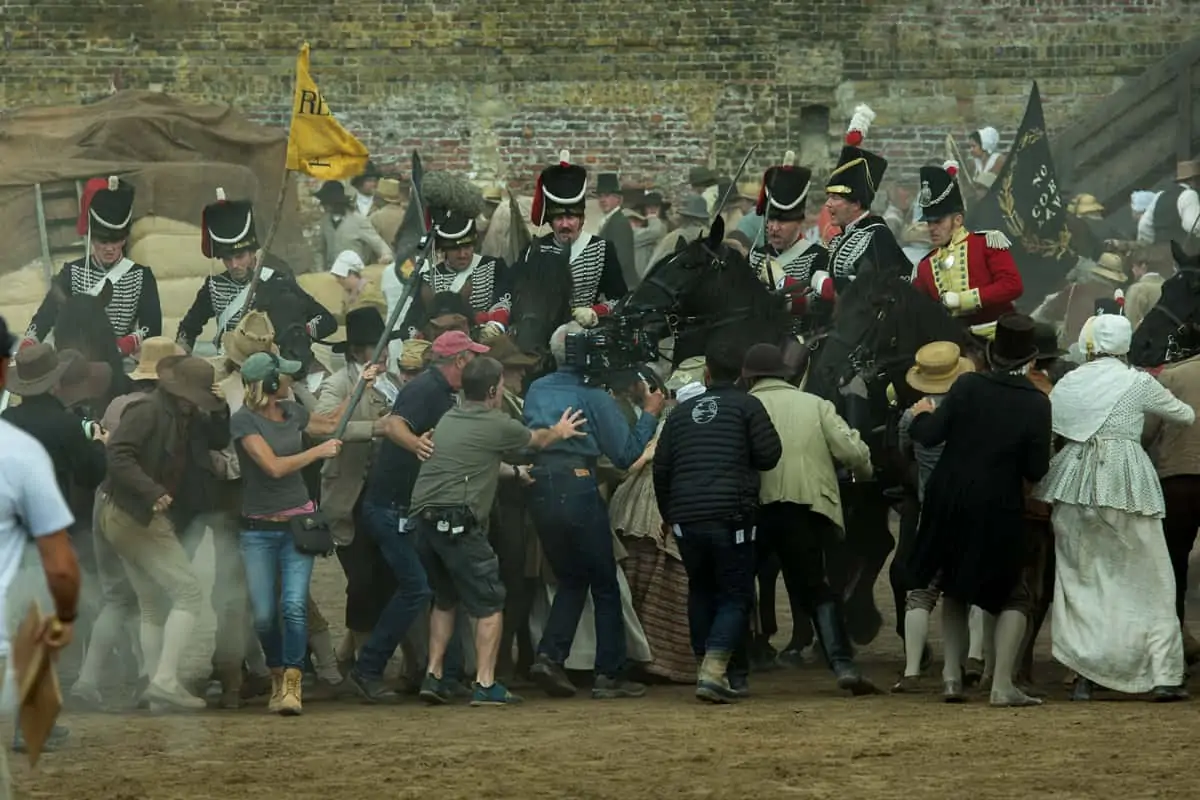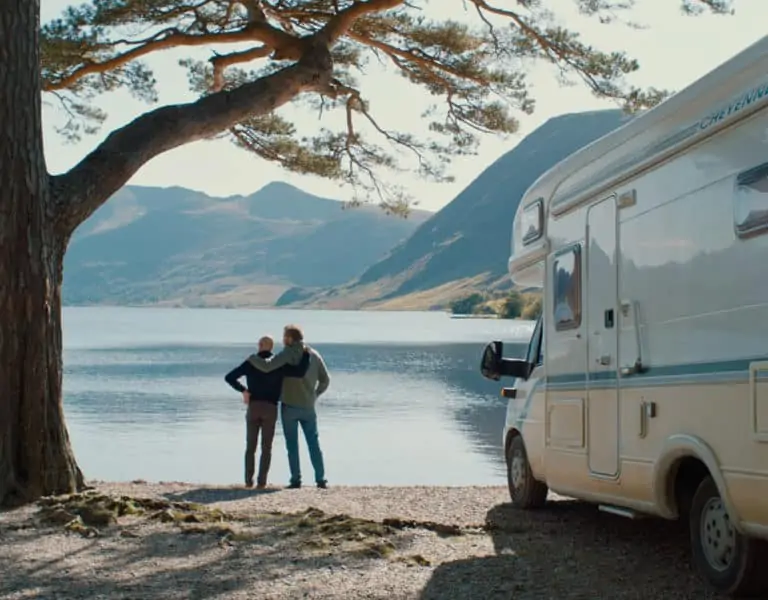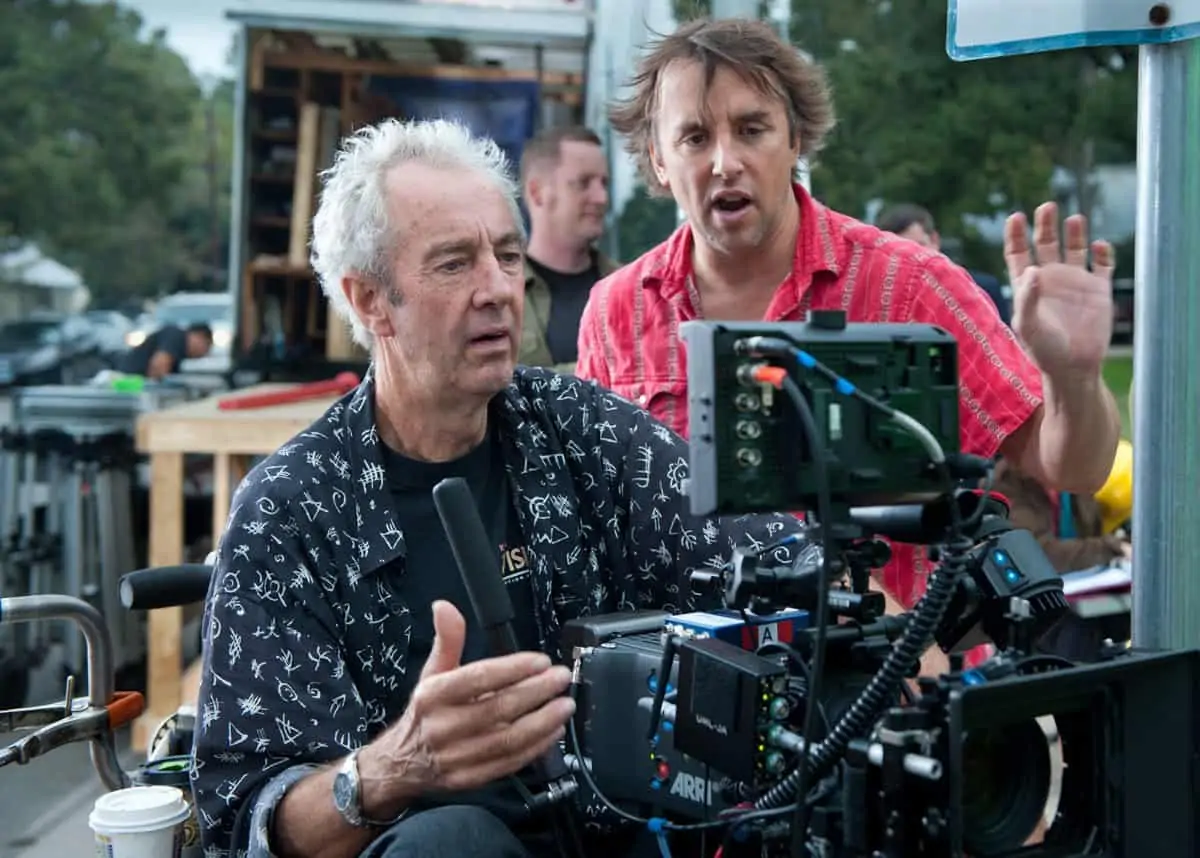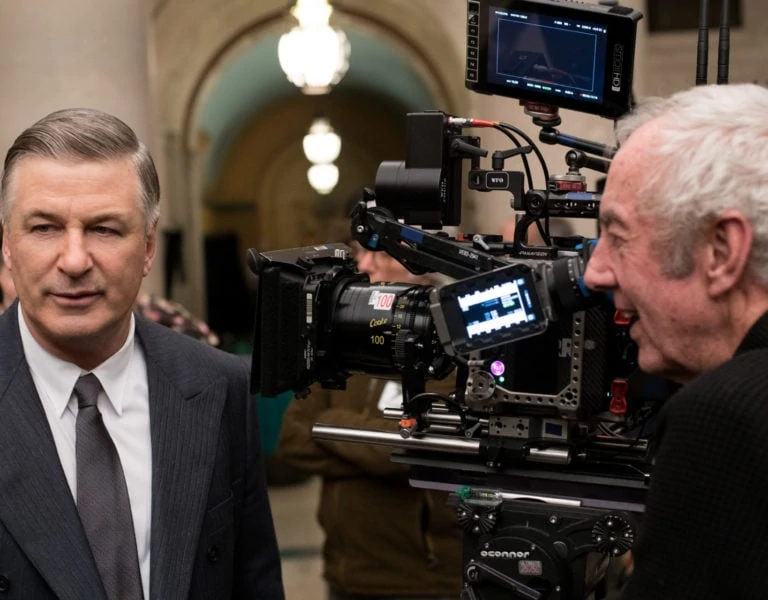Sun King
Dick Pope BSC / Mr Turner
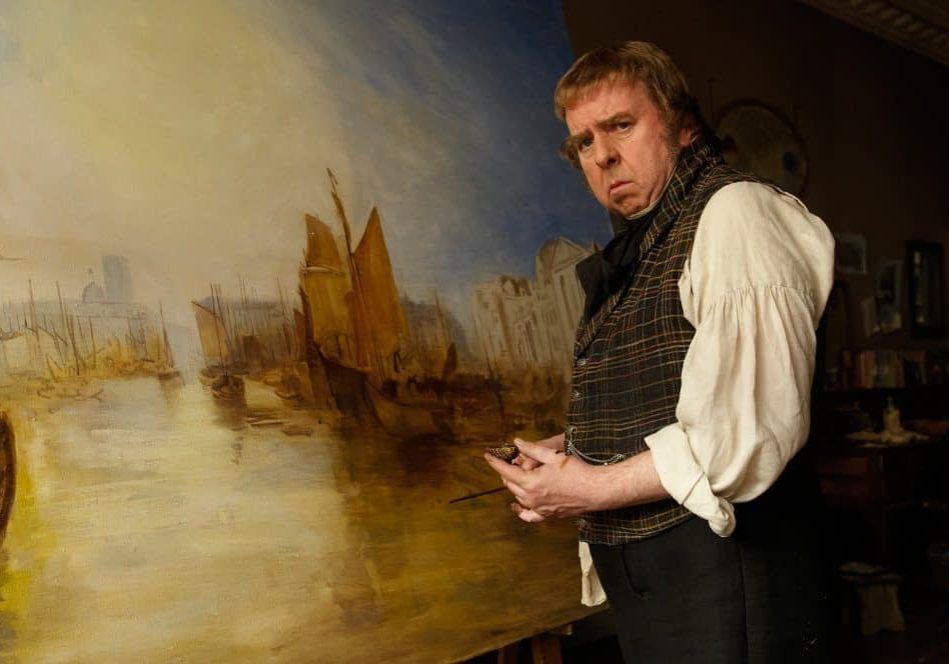
Sun King
Dick Pope BSC / Mr Turner
BY: Ron Prince
For his 10th movie with British filmmaker Mike Leigh, cinematographer Dick Pope BSC, was given a subject that most could only dream about: a biopic about English Romantic artist JMW Turner, known as "the painter of light".
Turner was considered a controversial figure in his day, but is now regarded as the artist who elevated landscape painting to an eminence rivalling the Renaissance, through his prodigious talent and prolific production of oil and watercolour landscapes.
Whilst the film, simply titled Mr Turner, includes visual influences rooted in the romantic paintings of the 19th century, it is chiefly a character study of the mercurial artist – an eccentric, reclusive character, bedevilled by depressive bouts and tangled familial and amorous relationships.
Mr Turner, produced for around $15m, was lauded by critics after it screened at the 67th Cannes Film Festival. Indeed, Timothy Spall won the gong for Best Male Actor and Pope was honoured with the Vulcain Technical Artist prize by the CST (Commission Supérieure Technique de l’Image et du Son) for “bringing to light the works of Turner” via his deft cinematography. Here, Ron Prince discovers more about how Mr Turner was conceived and shot.
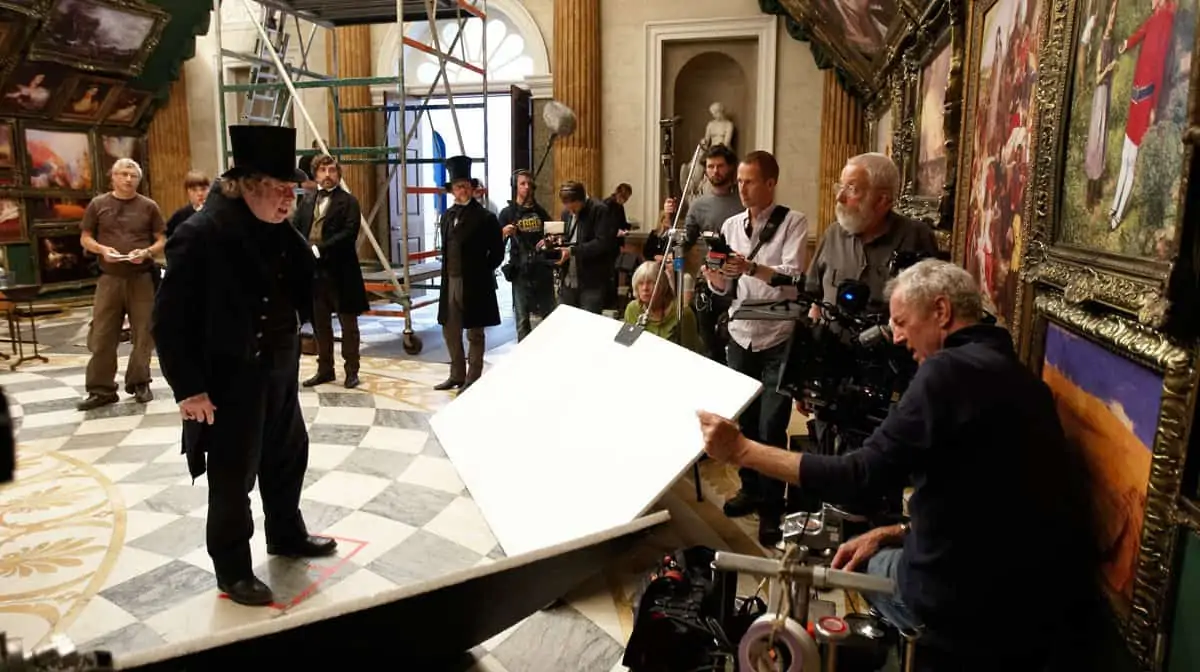
You’ve worked with Mike Leigh for a very long time. Tell us about your working practices with him?
DP: Mike is a filmmaker unto himself and has a way of working that is unique. He begins working with his actors around five months before shooting begins and without any script. He and his actors begin by creating each individual character to be portrayed in the film and then, and only then, their relationships with each other. By the end of this prep period every character and relationship is fully formed and the cast are totally conversant with who they are and where they’re coming from. Only at the end of these five months does he analyse, refine and then distil what he has discovered on the journey thus far. He then takes a few days out, writes the briefest synopsis of a plan for the film, shares this with all of us, and this becomes our bible on which we proceed to schedule and make the film. Based on this synopsis he then starts improvisations/rehearsals proper with the actors, and the scenes begin to be devised, and then we shoot what he has prepared. Then he rehearses more, and then we shoot, same, same, right up until the end. There is never a script while we make the film, but at the end he writes it all down and it becomes the film in retrospect. This is the only way he works; there is never another way. As we move forward, the scenario uncovers like a puzzle, and the construction of the scenes is created as and when the action unfolds, in the locations we have previously scouted together. For me, as the cinematographer, this means you can’t really plan ahead, but instead embark on a journey of discovery.
The other noteworthy thing to mention is that all films with Mike are a genuine collaboration – he is a great listener, observer and very inclusive. With his encouragement we all – camera, design, costume, make-up, sound, etc. – feel free to contribute thoughts and ideas, although he is the captain of the ship and most definitely it’s his hands on the wheel!
Did you look at any creative references prior to the production of Mr Turner?
DP: One of our main references and influences for the production of Mr Turner was the magnificent achievement of Stanley Kubrick and John Alcott BSC on Barry Lyndon (1975). It’s one of my favourite movies of all time, a cinematic masterpiece despite the heavy use of zooms, and Mike and I watched a recently-restored DCP of Barry Lyndon several times at Warner Bros’ private screening room in Holborn. I also studied the work of other artists, such as Joseph Wright of Derby, the nocturnal paintings of John Atkinson Grimshaw, James Whistler, Constable, Gainsborough, Ingres and Claude – to see how they painted light and form in their works.
How did you go about creating the colour palette for the movie?
DP: It was a collaborative effort. Well before prep began, me, 1st AC Gordon Segrove and DIT Peter Marsden, who both in their own rights are very talented photographers, absorbed Turner – seeing the exhibitions, reading books and revisiting Tate Britain, which is home to a magnificent permanent collection and a wealth of research material.
Gordon scrutinised Turner's use of colour. He wrote a wonderful note to me saying, “Turner used warm yellow in the highlights and blue/teal in the shadows as his two main complementary colours. Indeed, this seems to be born out by the chart of colour pigments available to him at the time and as displayed at Tate Britain. His use of these two complimentary colours adheres very well to colour grading theory, in that if you add yellow to your highlights, and blue to your shadows, basically split toning the highlights and shadows, you change the world around the subject, but the all-important skin tones remain the same."
Peter devised the palette based on this research and, as a result of painstaking testing right through the DI process, we made the appropriate LUTs. Colourist Adam Inglis did a wonderful job and was involved from the very first camera tests onwards, applying the chosen palette via the Baselight in the DI suite at Lipsync, also thereby helping to determine the look of the film from the outset.
Not by accident, the colours used throughout the film are exactly the same as the pigments chosen by Turner’s father at the Colourman’s (pigment supplies) at the beginning of the film. The calibration later allowed us to refine things, just as Peter had originally indicated, adding a little yellow green in the highlights without touching the faces, and green blue "teal" in the shadows, a characteristic combination of Turner's paintings.

Why did you select the 2.35:1 aspect ratio for Mr Turner?
DP: Despite being shot in 2.35:1 aspect ratio, and the fact that I could photograph views of land, seas and skies, Mr Turner is not a film of landscapes – at least half of the film takes place indoors. It’s more about character. We wanted to show Turner’s cultured but fragile humanity, a man of few words who had strong emotions and emotional relationships. I had attempted to persuade Mike years before about the merits of the wider format, and he finally agreed for Happy-Go-Lucky (2008). We particularly enjoyed working in this format on that film, and so used it again on Another Year (2010). It’s particularly useful in constructing the narrative in interiors. The thing about 2.35 is that it very much suits the way we compose on these films, largely employing a tableau film-making style, and often trying for a scene in just one static or developing shot, which we both adore. Consequently, we use the extra width to choreograph the actor, or a number of actors, observing them alone or together, with and against each other, entering and exiting, but generally not interrupting their flow, allowing them to give their best with little intrusion. Unlike 1.85, which forces you wide in these situations, 2.35 allows you right in there for multiple close and mid group shots, and, subsequently, for the audience, you’re right in there too.
In terms of camera movement, I have to mention Colin Strachan, with whom I first worked with on Mike’s Naked in 1992. He is a great grip, an artist in his own right, and a truly sensitive mover of the camera. He was with me in every aspect of telling this story.
Where did you shoot the movie?
DP: As is usual for Mike, the film was shot entirely on location. We alternated between some authentic historic sites, such as Petworth House – home of Lord Egremont, who was the main patron of Turner, and where many Turner paintings are hung today – and some beautifully-designed reconstructions realised by our designer Suzie Davies. For example, the Royal Academy of 1840, where we see Turner and the other painters on varnishing day before the annual exhibition, was recreated in Wentworth Woodhouse, near Rotherham, in South Yorkshire. In fact, even the interior of Mrs Booth's tiny home in Margate was shot on location. Margate, as it was then doesn’t exist any longer, but its light is famous and has drawn artists there for centuries. The light in the little fishing harbour of Kingsand, just south of Plymouth, which stood in for Margate, was ravishing. We got the look and feel of Margate that we wanted from both outside and inside that house. Its position – beautifully appointed to capture sunrise, and equally beautiful light throughout the day – helps you understand implicitly what drove Turner to Margate in the first place. What you see on the screen is what we found there.
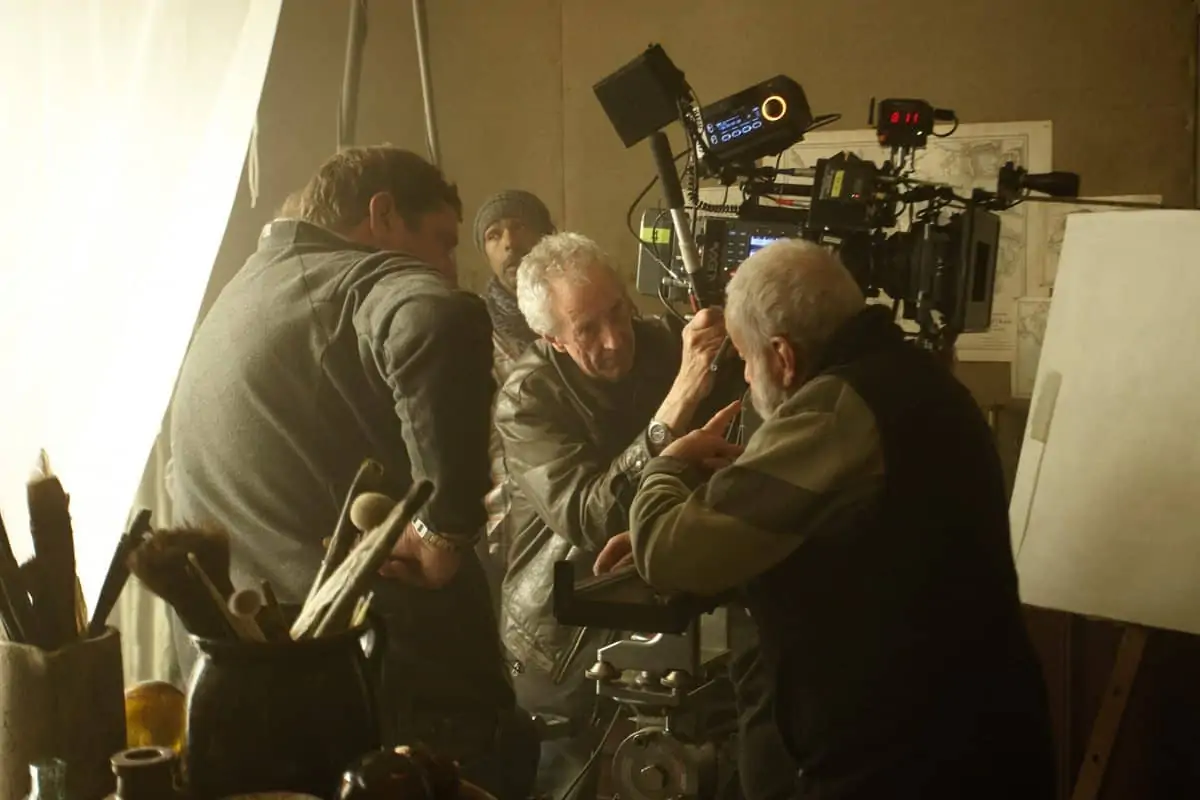
"In terms of light, the film is bathed in a soft and gentle atmosphere, reminiscent of Turner’s paintings. I used almost no direct light – always bounced and then through layers of diffusion."
- Dick Pope BSC
Why did you elect to shoot this movie digitally, especially one about a painter, when all your other films with Mike have been on celluloid?
DP: Initially the decision was a budgetary constraint but, following our first tests, I became more and more excited about the possibilities that digital capture offered. Meanwhile, during prep, all around us the celluloid infrastructure was collapsing. In the end I’m not the least bit concerned that we chose this route, and am proud of our achievement. The film looks neither film nor digital. Painterly for sure, whatever that is, but the audience can make up its own mind concerning that. To tell you the truth, I think philosophically the decision to shoot digitally was the correct one. Turner was a visionary, constantly searching for new techniques, intrigued by new technologies and had a passion for astronomy, physics and science, as we can see in some scenes from the film – with his experiments in prismatic refraction, the arrival of steam-powered trains and ships, and the very new Daguerreotype camera. So shooting in digital seemed right to me, and I imagine it would not have been uncomfortable for Turner either. He’d probably have realised its future.
Tell us about your selection of cameras, workflow and lenses?
DP: We almost always work with only one camera and me operating. That’s always been the same. We chose a combination of an ARRI Alexa camera and Codex recorder. Using mostly this configuration I had just finished shooting Angelica in New York, another project set later in the Victorian era, and was very pleased by the look and how I could light for digital in confined, low-light situations with candles, oil-lamps and very few fixtures. Therefore I didn't shoot any tests to make my camera or recording decisions for Mr Turner. For me, shooting ARRIRAW was an obvious choice – it gives you a wonderful pixel canvas. For example, the opening of Mr Turner, set in a hazy Dutch landscape, along a canal with a windmill, with the sun just above the horizon, would probably have been impossible digitally without the latitude that ARRIRAW can provide in the highlights. We never had any concerns about skies or burned exposures, and this allowed me to go farther and farther as shooting progressed.
The lens selection was trickier. I tested almost every lens available at Movietech in London – Leica Summilux, ARRI Master primes, Cooke S4 and S5s – everything. But for this film I really wanted something a little older, softer, more romantic optically-speaking, especially as we were going to be shooting digital. Very late in prep Movietech took delivery of an old set of Cooke Speed Panchros dating from the 1950s with an incredible history – they were used during the first ascent of Everest and by Kubrick on Spartacus (1960). This set of lenses had been re-mounted by TLS and were purchased by Movietech to service a strong demand on commercials. I was blown away by the test results. The Panchros have an antique construction with tiny rear lenses. They have a very gentle, very romantic character, and are truly lovely. They were a fundamental tool for this movie along with the Alexa and the Codex workflow.
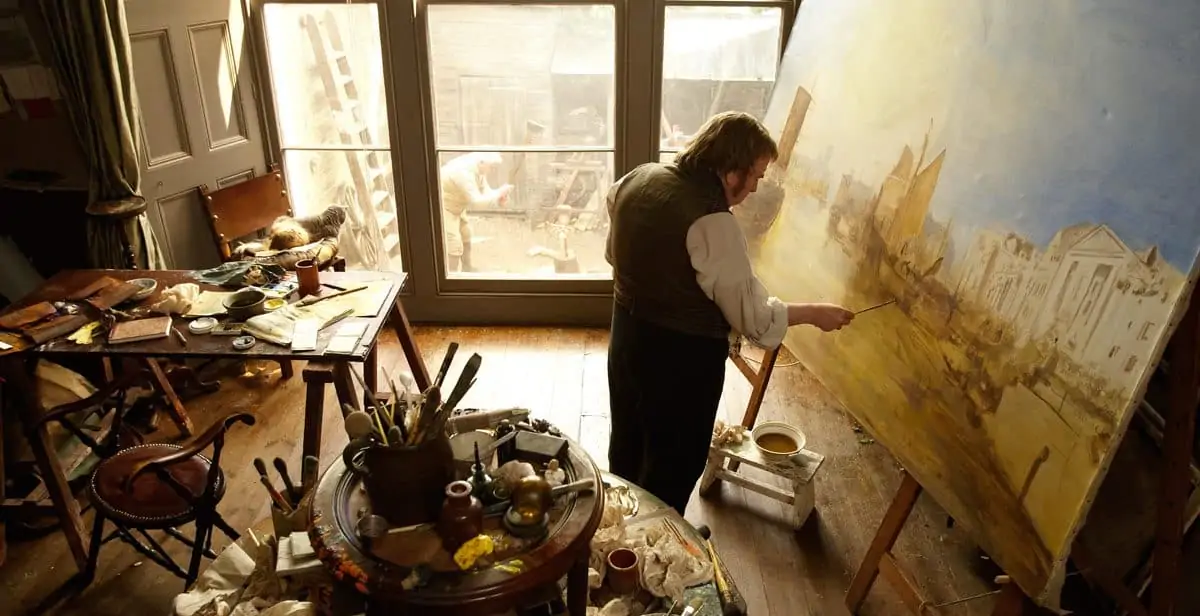
Please give us some insight into your lighting strategy?
DP: In terms of light, the film is bathed in a soft and gentle atmosphere, reminiscent of Turner’s paintings. I used almost no direct light – always bounced and then through layers of diffusion. Sometimes I lit with just practical fixtures. The candle-lit scene at Petworth is only candlelit, albeit at 1600ASA, and for the night scene when Turner and Mrs Booth kiss on the landing, we used just the light from the oil-lamp she is holding and a very small moonlight effect I introduced coming through a skylight. When they exit and close the door the light disappears with them. The only scene that is a slight exception to all this soft light is when Turner goes into the photographic shop/studio, sits in front of the camera and is literally blinded by the sunlight reflected from a mirror. I blasted a big lamp onto that mirror for that shot. It seemed pretty funny to me to see this character, many of whose paintings are bathed in a perpetual magic-hour glow, finding himself tricked by the harsh light of this new way of capturing images. I’d like to thank my gaffers Andy Long and Liam McGill for their outstanding work on the film.
What are your thoughts about the digital workflow?
DP: Working with Mike, you have to minimise anything 'technical', to allow for his style of working with the actors. This meant keeping things simple and minimising monitoring onset. Peter Marsden is a great DIT and he made sure we kept the workflow simple. We used two Codex Vaults – one for an initial check and back-up of the rushes on the camera truck, and one for generating dailies and archiving to LTO-tape. Working with Peter, we created two ARRI Look files, which were applied to the viewfinder and monitor output from the Alexa, to warm up the highlights and cool the shadows. As I have mentioned, Peter, Gordon and I had studied Turner’s works and noticed that idea in many of them. So we applied these simple looks to the dailies in a semi-automated method, by using the 'Look' metadata field on Vault. Codex is a wonderful tool. We literally have the lab with us, everything is now done on site, and the entire film production is controlled ‘live’.
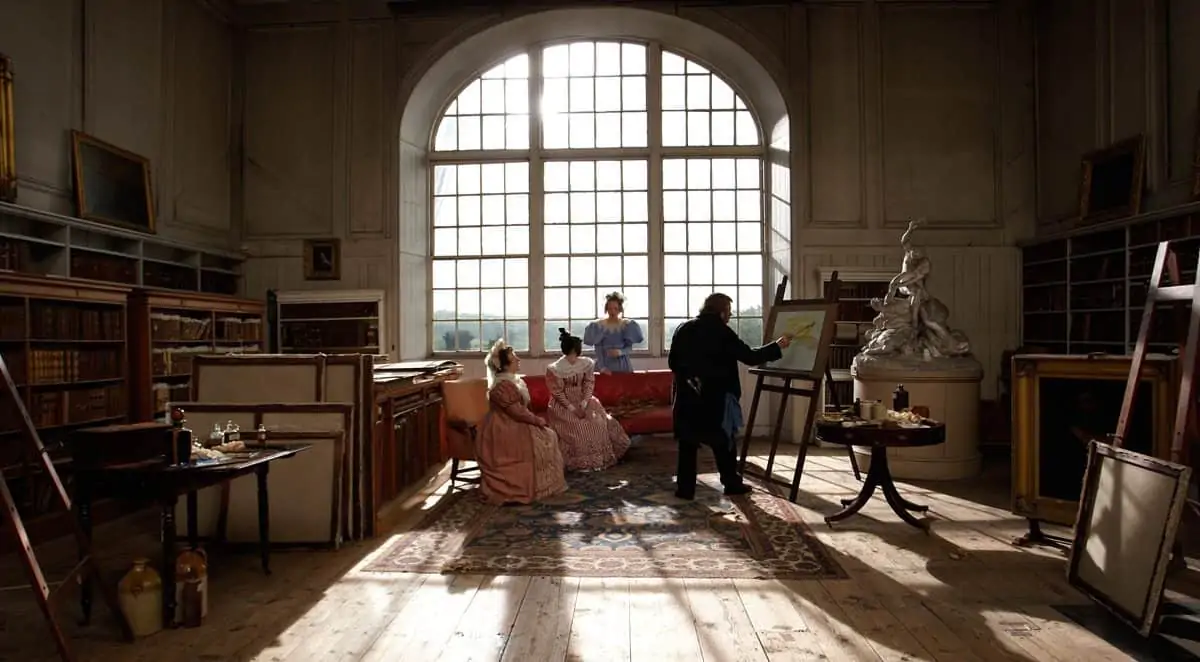
How did you view the dailies?
DP: For monitoring on-set we had a 17" OLED monitor, but it was kept at a distance from the actual set and well away from the actors. So anything fussy like having specific LUTs on a scene, or adjusting CDL wouldn't work. We were able to organise screenings of sync’d digital rushes every night, old school-style, viewing a large monitor on the dining bus. Mike greatly values this experience, as it allows him to listen to feedback from all of us. Viewing rushes communally offers a sense of shared creation that is very close to what we used to have when we shot film. However, the actors are not invited and never see anything until they see the finished film.
How do you work with Mike on-set?
DP: Mike directs from the camera, only at the camera. He looks through the viewfinder on almost every key shot and directs from there too, refining the acting and its choreography in the greatest detail. He watches each take from next to the camera. Nothing is left to chance.
Is Mr Turner your best movie?
DP: I would never answer a question like that. But what I would say is this film was a joy to shoot. Mike had wanted to make Mr Turner for many years, and I think the constraints of limited budget actually proved enabling, and made us think very carefully about what we were doing. But it was the weather that turned out to be the real deal. I dreaded overcast skies; it’s Britain after all. Stormy and dramatic. Yes. But dull and grey? Fortunately, we were blessed with resplendent weather for the duration of the production – between May to August 2013. It only rained on the very last moment of the last shot on the final day. As the painter exclaims at the end of the film: ‘The Sun is God’.
